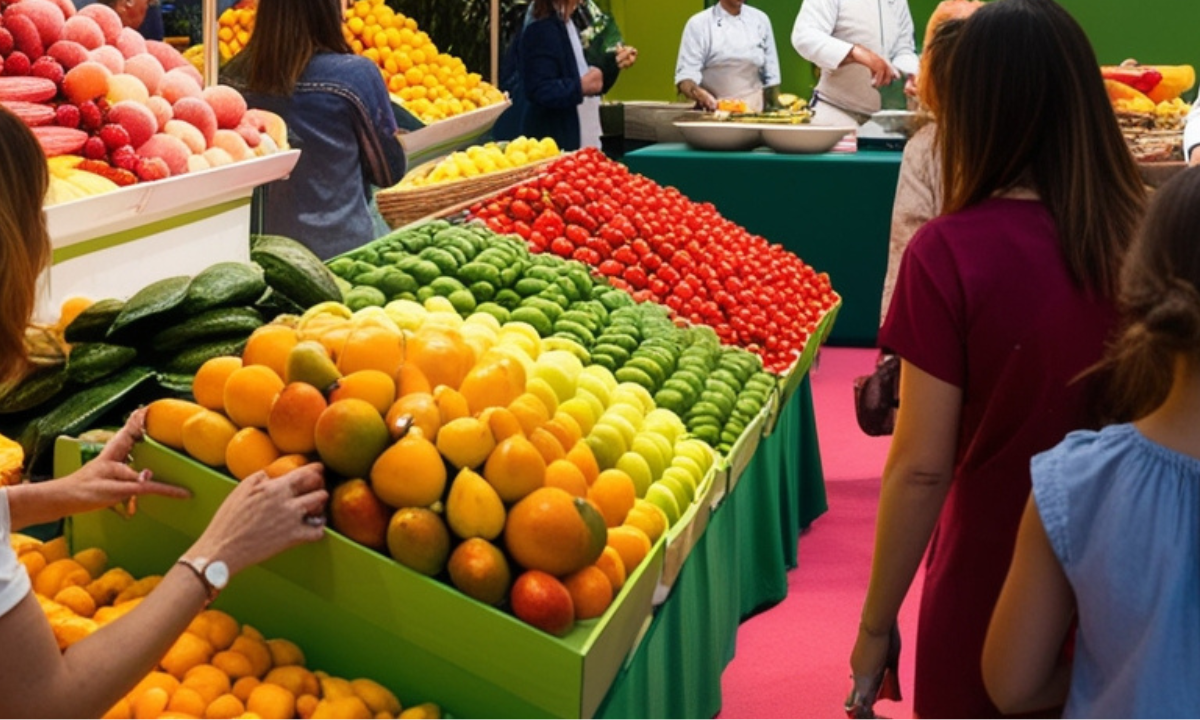As parents, we all strive to ensure our children grow up healthy and strong. One essential aspect of their growth is providing healthy snacks for kids. Snacks not only keep them energized between meals but also supply the necessary nutrients for their development.
Balancing nutrition with taste can sometimes be challenging, but with the right snack ideas, it’s entirely achievable. In this article, I’ll share various healthy snack ideas that your kids will love, ensuring they receive the essential nutrients they need while enjoying every bite.
Key Takeaways
- Healthy snacks provide essential nutrients for growing kids.
- Incorporating fresh fruits and vegetables can make snacks enjoyable.
- Whole grains and healthy fats keep kids satisfied between meals.
- Limiting added sugar is crucial for maintaining energy levels.
- Easy and homemade snacks are often healthier than store-bought options.
Understanding Healthy Snacks for Kids
A healthy snack is a small portion of food consumed between meals to maintain energy levels and prevent overeating during main meals. For kids, snacks are vital in their daily diet, supplying important nutrients needed for growth and development. Unlike junk food, healthy snacks contribute positively to their overall health, helping them stay active and focused throughout the day.
Benefits of Nutritious Snacking
Healthy snacks offer sustained energy, support brain function, and help maintain concentration. They prevent the dips in energy that can occur between meals, ensuring your child remains attentive during school or playtime. Additionally, nutritious snacks can bolster the immune system, making kids less susceptible to common illnesses.
Essential Nutrients in Kids’ Snacks
Ensuring that snacks contain essential nutrients is crucial for your child’s growth and well-being. Let’s explore some key nutrients and their benefits:
Vitamins A and C
Vitamin A is essential for maintaining good vision and a healthy immune system. Foods rich in vitamin A include carrots, sweet potatoes, and spinach.
Vitamin C helps in the absorption of iron and boosts the immune system. Citrus fruits, strawberries, and bell peppers are excellent sources of vitamin C.
Protein Sources
- Peanut Butter is a fantastic source of protein and healthy fats, essential for muscle growth and energy.
- Yogurt provides not only protein but also calcium, which is vital for strong bones and teeth.
Healthy Fats
Avocado is packed with healthy fats that support brain development and overall growth.
Nuts offer a great source of protein and healthy fats. However, always ensure there are no allergies before introducing them to your child’s diet.
Nutrient Breakdown of Common Healthy Snacks
| Snack | Key Nutrients | Benefits |
|---|---|---|
| Apple Slices | Vitamin C, Fiber | Boosts immune system, aids digestion |
| Peanut Butter | Protein, Healthy Fats | Supports muscle growth, keeps hunger at bay |
| Yogurt | Protein, Calcium | Strengthens bones, supports bone health |
| Veggie Sticks | Vitamins A & C, Fiber | Enhances vision, boosts immunity, aids digestion |
| Whole-Grain Crackers | Whole Grains, Fiber | Provides sustained energy, aids digestion |
Top Healthy Snack Ideas for Kids
Offering a variety of snacks can keep things interesting for your child. Here are some healthy snack ideas that kids will love:
Fruit and Vegetable Snacks
Fresh fruits like apples, bananas, and berries are easy and nutritious. Veggie sticks such as carrots, cucumber, and celery paired with hummus or guacamole make for a crunchy and tasty snack. These combinations provide a mix of vitamins, minerals, and fiber, supporting overall health.
Whole Grain Snacks
Whole-grain crackers paired with cheese or nut butter provide a balanced option. Homemade oat-based muffins with whole grains and minimal added sugar are another excellent choice. Whole grains offer sustained energy, keeping kids active and focused.
Protein-Packed Snacks
Hard-boiled eggs offer a simple and protein-rich option, while edamame pods sprinkled with a little salt serve as a tasty and nutritious treat. Protein is essential for muscle growth and repair, making these snacks perfect for active children.
Creative Snack Ideas to Make Kids Love Healthy Eating
Making snacks fun and engaging can encourage kids to choose healthy options willingly. Here’s how you can make snack time enjoyable:
Fun Presentation Techniques
Using colorful plates and utensils can make snacks more appealing. Creating shapes with fruits and vegetables using cookie cutters adds a playful element to snack time. For example, star-shaped apple slices or heart-shaped veggie sticks can make a big difference in your child’s interest in their food.
Involving Kids in Snack Preparation
Letting your children help wash fruits or assemble their own snack packs fosters a sense of involvement and excitement about what they’re eating. Encouraging creativity by allowing them to choose their own ingredients can make healthy eating more enjoyable and empowering.
Using Colorful Ingredients
Incorporating a variety of colors in snacks not only makes them visually appealing but also ensures a range of nutrients. A colorful plate can make healthy eating more attractive to kids, enticing them to try different fruits and vegetables.
Easy Homemade Snacks vs. Store-Bought Options
While store-bought snacks are convenient, homemade snacks often offer better control over ingredients and nutritional content. Let’s compare the two:
Benefits of Homemade Snacks
Homemade snacks allow you to control added sugars and preservatives. You can customize snacks based on your child’s preferences and dietary needs, ensuring they receive the best possible nutrition. Additionally, homemade snacks can be more cost-effective and tailored to include a variety of healthy ingredients.
Tips for Making Quick and Healthy Snacks
Prepare snack packs in advance with a mix of fruits, vegetables, and proteins. Use simple recipes that require minimal ingredients and time to make snack preparation hassle-free. For example, pre-cutting veggie sticks and portioning out yogurt can save time during busy mornings.
Selecting Healthier Store-Bought Brands
When opting for store-bought snacks, look for options with whole ingredients and low added sugar. Checking nutrition labels helps you choose healthier alternatives that align with your child’s nutritional needs. Opt for snacks that list whole foods as primary ingredients and avoid those with artificial additives.
Quick and Easy Snack Recipes
| Snack Name | Ingredients | Preparation Method |
|---|---|---|
| Veggie Hummus Cups | Carrot sticks, cucumber slices, hummus | Assemble in small containers |
| Fruit and Nut Mix | Dried fruits, nuts, whole-grain cereal | Mix and portion into snack bags |
| Avocado Toast Bites | Whole-grain crackers, avocado, parmesan | Spread mashed avocado on crackers, sprinkle parmesan |
Planning Healthy School Snacks and Lunchbox Ideas
Packing a balanced lunchbox ensures your child stays energized throughout the school day. Here are some strategies for planning healthy school snacks:
Balanced Snack Packs
Include a mix of proteins, whole grains, and fresh fruits or vegetables. For example, pair whole-grain crackers with cheese slices, fresh fruit, and a small granola bar for a well-rounded snack. This combination provides a variety of nutrients that support sustained energy and focus.
Incorporating Variety
Rotating different snacks keeps things interesting and introduces new flavors and textures. This variety can prevent snack time from becoming monotonous and encourage your child to try new healthy options. Incorporate seasonal fruits and vegetables to keep snacks fresh and exciting.
Ensuring Reasonable Serving Sizes
Following portion guidelines helps avoid overfeeding. Using small containers and snack packs makes portion control easier and ensures your child gets the right amount of nutrients without excess calories. This approach helps maintain a balanced diet and prevents unnecessary weight gain.
Managing Added Sugar in Kids’ Snacks
Reducing added sugar is essential for maintaining your child’s energy levels and preventing health issues. Here’s how you can manage sugar intake:
Identifying Hidden Sugars
Read nutrition labels carefully to identify hidden sugars. Be aware of ingredients like corn syrup, sucrose, and high-fructose corn syrup, which are common in many snacks. Understanding label terminology can help you make informed choices.
Alternatives to Sweet Snacks
Offer naturally sweet options like fresh or dried fruits instead of sugary treats. Using yogurt with fruit can be a healthier alternative to flavored yogurts that contain added sugars. These alternatives provide sweetness without the negative effects of excess sugar.
Reading Nutrition Labels
Check the sugar content per serving to choose snacks with lower sugar levels. Selecting snacks with minimal added sugars helps maintain your child’s energy and supports overall health. Educate yourself and your child about the importance of reading labels to foster healthy eating habits.
Utilizing Tools and Appliances for Healthy Snack Preparation
Modern kitchen tools can make preparing healthy snacks easier and more efficient. Here’s how you can utilize them:
Using an Air Fryer for Crunchy Snacks
An air fryer allows you to make crispy veggie chips without excess oil. You can also create homemade granola bars with minimal added sugar, providing a healthier alternative to store-bought options. The air fryer is a versatile tool that can enhance the texture and flavor of various snacks.
Simple Recipes with Oven or Stovetop
Baking whole-grain muffins with fruits and nuts is a straightforward way to prepare nutritious snacks. Preparing trail mix with dried fruits and nuts offers a convenient and healthy option for on-the-go snacking. These methods are easy and require minimal cleanup, making snack preparation hassle-free.
Incorporating Fresh Ingredients
Using fresh vegetables and fruits maximizes nutrient intake. Experimenting with different flavors and textures keeps snacks exciting and encourages your child to enjoy a variety of healthy foods. Fresh ingredients also enhance the taste and appeal of snacks, making them more enjoyable for your kids.
My Opinion
Providing healthy snacks for kids is a simple yet effective way to support their growth and development. By incorporating a variety of fruits, vegetables, whole grains, and proteins, you can ensure your child receives the necessary nutrients to thrive. Involving your kids in snack preparation makes healthy eating a fun and engaging experience. With a little creativity and planning, snack time can become an enjoyable and nutritious part of your child’s day.






